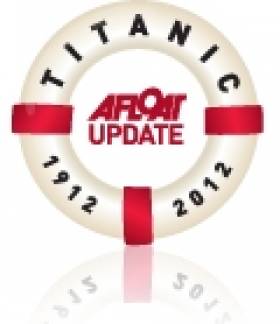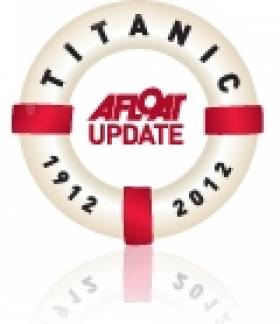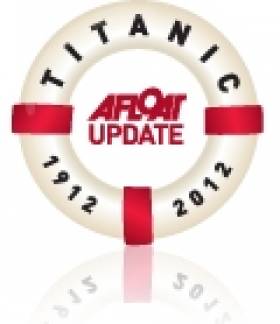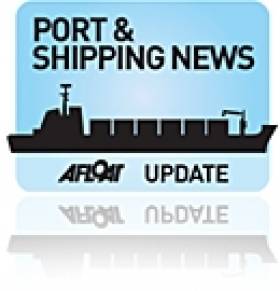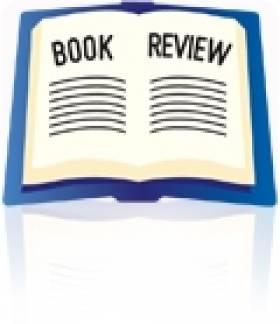Displaying items by tag: White Star Line
Lecture: R.M.S. Titanic-The True Story
#LECTURES- The Old Dublin Society is to host a lecture 'R.M.S. Titanic – The True Story' which is to be presented by Ed Coghlan next Wednesday (14th March) in Dublin City Library on Pearse Street.
The lecture starts at 6.30pm and will be held in the libraries Archive Conference Room. All are welcome to attend the lecture which is admission free. For further information about the society visit www.olddublinsociety.ie/ in addition the library by clicking HERE.
Photo Exhibition Includes Cobh’s ‘Titanic’ Pier
#PHOTO EXHIBITION -'The Pier' a collection of images created by French photographer Charlie Jouvet was launched this evening at Alliance Francaise, Dublin and continues into next month, writes Jehan Ashmore.
The images portrayed capture a meditative journey from the centre of the island of Cobh to the sea and features the town's former White Star Line pier. It is from this pier that liner tenders took the last passengers to board the R.M.S. Titanic which was anchored offshore.
Jouvet created the images while in residency with the Sirius Arts Centre in Cobh where there have been calls to preserve the historic 19th century pier also known locally as the 'Heartbreak' Pier as many emigrants departed Ireland for the last time and to seek new lives abroad.
Constructed of timber, the pier is in a perilous condition and according to experts could collapse unless urgent funding is found, as previously reported on Afloat.ie
The Berlin-based photographer has exhibited in his native France and also in Cambodia, Germany, Poland and Switzerland. His most recent work was at the PhotoPhnomPenh Festival which was held last November.
The Dublin exhibition continues to 21st April and is open to the public (free of charge) at Alliance Française, 1 Kildare Street, Dublin 2. For further information Tel: (01) 676 1732 and opening hours visit www.alliance-francaise.ie/gallery/
Cobh’s ‘Titanic’ Pier Could Collapse
#TITANIC- In the centenary year of commemorating the R.M.S. Titanic, the pier from where her last passengers boarded at Cobh (Queenstown) is in danger of collapsing unless funding is made available to carry out immediate preservation reports The Irish Times.
The 19th century pier constructed of timber is one of the most tangible links between the town and the liner which anchored offshore and where passengers boarded by tenders.
In addition many emigrants also trundled the pier's planks to depart Irish shores for the final time on ocean-going journeys to the four corners of the world in an effort to start new lives.
To read more about the story click HERE.
Cruiseship Call to Remember Belfast's Titanic
#TITANIC- In this centenary year of the R.M.S.Titantic's sinking, Fred Olsen Cruise Lines Balmoral is to include a port of call to Belfast Harbour, where passengers are to visit the Harland & Wolff shipyard, during an Easter mini cruise in early April, writes Jehan Ashmore.
Balmoral will be the first cruiseship to berth in Belfast this year and her passengers are to visit the world famous shipyard on Queens Island where the liner was built for the White Star Line.
In addition there will be opportunities to call to the Botanical Gardens, Ulster Museum and Belfast Castle. The three-night mini-cruise starts in Southampton and is to include an en-route call to Liverpool, a former City of Culture.
For further information on other cruise calls to Belfast as previously reported on Afloat.ie click this HERE. In addition to the Titanic Walking Festival (31 March-22 April) as also reported click HERE
Harland & Wolff Secure Dry-Docking Contract of Canadian FPSO
#PORTS & SHIPPING – Harland & Wolff Heavy Industries Ltd (H&W) have secured a contract to dry dock and service the Searose (2004/139,950dwt) a Canadian east coast based floating production storage and offloading (FPSO) vessel later this year.
The 272 metres long by 46 metre beamed FPSO is operated by Husky Oil and is based at the White Rose oilfield, 350km off the Newfoundland coast.
Searose will be dry-docked at H&W's Belfast Repair Dock and also use the Repair Quay during May and June. The work at the Queen's Island facility will be led by an integrated project team made up of owner and H&W personnel along with key contractors and vendors.
"H&W, along with our key contractors, are pleased to have secured the SeaRose FPSO project and to demonstrate the capabilities of the UK Oil & Gas supply chain," said H&W Project Manager James Lappin.
"This is an important opportunity, not only for H&W but for Northern Ireland, to extend a welcome to our Canadian visitors and demonstrate our world class facilities."
"We are proud that they have put their trust in us," H&W Chief Executive Officer Robert J Cooper said. "All levels of H&W are committed to ensuring this important project is completed safely and successfully."
H&W was founded over 150 years ago and has built some of the world's most famous ships, including three from the White Star Line: the Olympic, Titanic, and the Britannic, P&O's Canberra and the RN World War II battle-cruiser HMS Belfast, where she remains at moorings on the Thames.
'Titanic Port’ Book Launched
A new book celebrating 400 years of the development of Belfast Harbour was launched on Monday in the offices of Belfast Harbour Commissioners. 'Titanic Port' was written by award-winning journalist and author Alf McCreary, and was commissioned by the port authority. For a full account of the book launch please click here (which includes a link to a podcast by the author).
The book tells the story of those who built the harbour and the foundations for Belfast's emergence as a major urban and commercial centre. The book traces the harbour records, dating back to 1613 when King James I authorised the construction of a small wharf on the river Lagan.
At over 400 pages long, 'Titanic Port' also contains over 700 illustrations, many previously unseen photographs and paintings from the harbour's archives, including panoramic port and city views.
A central theme of the book is the intimate relationship between Belfast and its harbour and how the Belfast Harbour Commissioners were instrumental in bringing shipbuilding to the city. In particular, how they helped ensure that Titanic and her sister ships, Olympic and Britannic were built at Queen's Island. In addition the Commissioners investment of the Thompson Dock, where the trio of iconic liners were fitted out, was the largest of its kind in the world.
The cost of the dock was almost the same price as the Titanic and was specifically built to help Harland & Wolff secure the contract from the ships' owners, the White Star Line.
'Titanic Port' also follows the development of the Jacobean and Georgian port which was barely navigable due to Belfast Lough's treacherous mud-banks and sandbanks. Without the creation of a navigable channel over the centuries by successive harbour authorities, it is arguable that Carrickfergus might have become Ulster's main seaport.
Also examined is the vital role the harbour during both World Wars I and II and how the Harbour Estate escaped the worst of the 'Troubles' and its recent re-emergence as a major economic driver for Northern Ireland's economy. The social history of Belfast is also explored and how it influenced the port, in particular, Sailortown.
'Titanic Port' is currently on sale priced £25 (stg) and available online at http://www.titanicport.comThe book was produced by Dr. Claude Costecalde of Booklink and designed by Wendy Dunbar.
For information in general about Belfast Harbour Commissioners logon to www.belfast-harbour.co.uk/


























